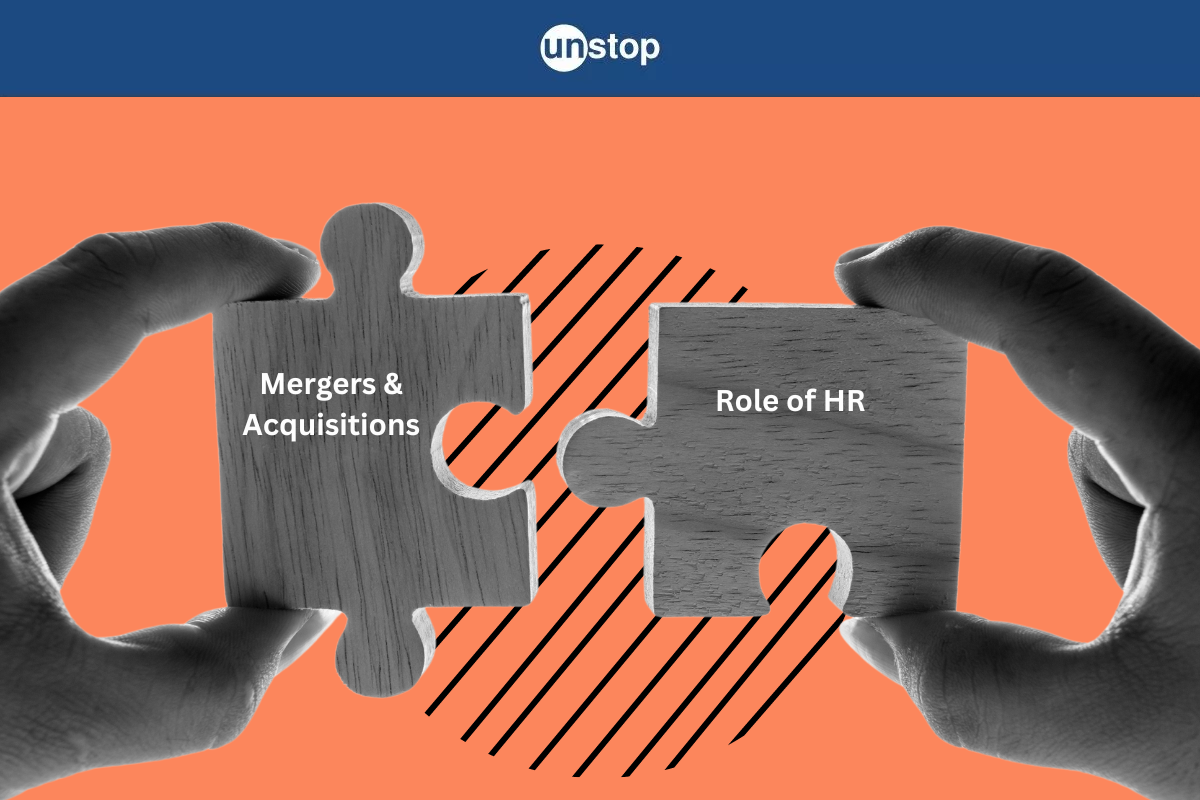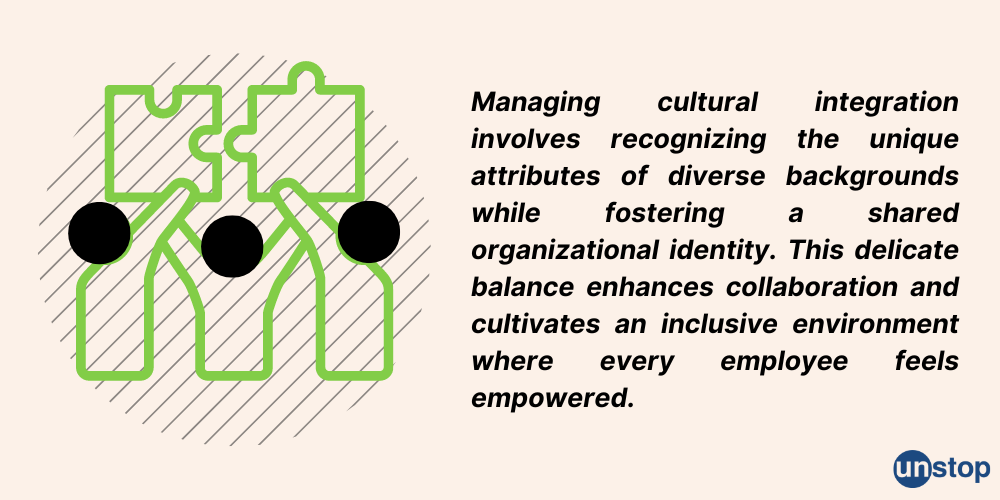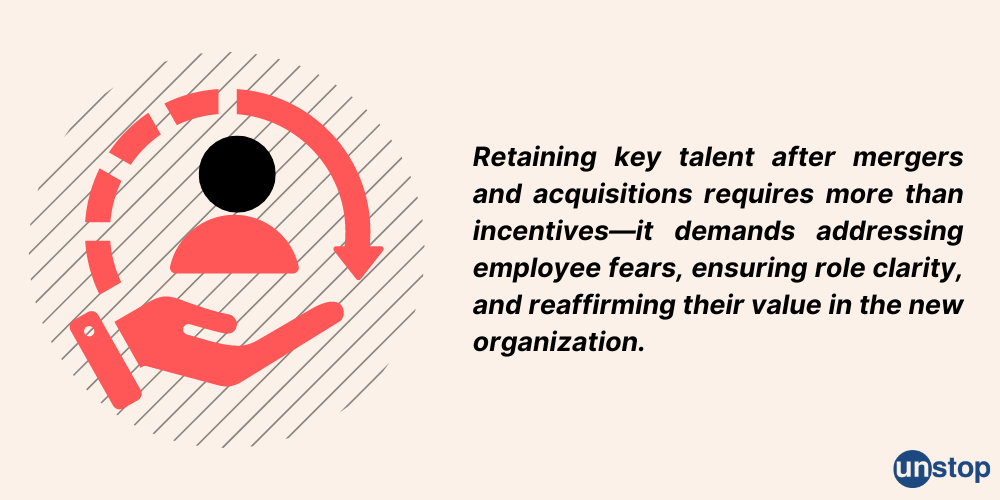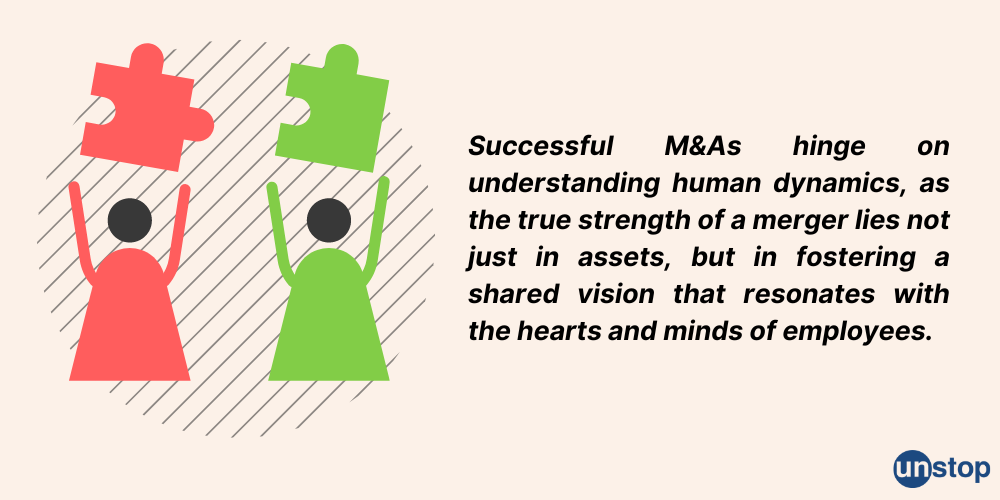- Understanding HR's Role in Mergers and Acquisitions
- Managing Cultural Integration
- Retaining Key Talent after Mergers & Acquisition
- Managing The People Side of Mergers & Acquisitions
- Summary
- Frequently Asked Questions
Role Of HR In Mergers And Acquisitions - Setting The Stage Right For The Big Deal

When people think of mergers and acquisitions (M&A), their minds often jump to financial analysts, legal experts, and executives negotiating complex deals. It's easy to overlook the critical role Human Resources (HR) plays in these high-stakes transactions. Behind the scenes, beneath all the legal and financial technicalities, HR is the driving force that ensures a successful integration of the most important asset—people.
From managing culture clashes and aligning leadership to addressing employee concerns and ensuring retention, HR plays a pivotal role in shaping the success or failure of M&A efforts. This article will help explore how HR can be the backbone of a successful merger and acquisition strategy.
Understanding HR's Role in Mergers and Acquisitions
HR team has an indispensible role in ensuring the success of M&A efforts. Here's how:
Ensuring Smooth Transitions
HR plays a pivotal role in the success of mergers and acquisitions (M&A) by managing the complex process of integrating two organizations. Beyond technical and financial considerations, HR is responsible for developing strategies to harmonize operations, assess existing HR practices, and identify gaps that could disrupt the transition. This involves implementing new HR systems to streamline processes like payroll, performance management, and compliance across the merged entities.
Compliance with labor laws is a critical aspect, as HR must ensure that contracts, benefits, and compensation packages align with local regulations and organizational standards. This careful management not only maintains operational continuity but also helps avoid legal complications or employee dissatisfaction.
Example: When Tata Motors acquired Jaguar Land Rover, HR teams ensured a seamless transition by aligning the compensation structures and benefits of employees across two very different business cultures, ensuring regulatory compliance in both the UK and India.
Promoting Cultural Integration
One of the greatest challenges during M&A is merging two distinct corporate cultures. Misaligned values and work practices can lead to friction, reduced productivity, and even conflict among employees. HR is responsible for promoting cultural integration by identifying key cultural differences early on and developing strategies to harmonize them.
This process often involves conducting workshops, team-building activities, and cross-functional collaboration sessions to promote mutual understanding and respect. HR also plays a critical role in defining new company values and helping employees from both organizations feel included in the post-merger culture.
Also Read: Role Of HR In Building An Inclusive Workplace In The Middle East
Facilitating Employee Integration
One of the most critical factors in M&A is the successful integration of employees, and HR is at the heart of this process. HR professionals design and implement tailored onboarding programs to introduce employees to the new organizational structure, goals, and culture. Customized training programs help align the workforce with the merged company’s objectives, ensuring a smoother adaptation.
Retaining top talent during this period is also essential, as uncertainty can lead to key employees leaving. HR plays a proactive role by addressing employees' concerns, providing counseling, and offering clear career pathing within the new company. By creating retention plans, offering incentives, and fostering an open communication channel, HR reduces the chances of losing high-performing employees.
Example: During the merger of Disney and 21st Century Fox, HR played a vital role in managing talent retention by focusing on career development and offering robust retention packages to prevent key creative and technical personnel from leaving during the transition.
Leading Communication Efforts
Effective communication is crucial during any merger or acquisition, and HR leads the charge in ensuring transparency throughout the process. Employees are often left in a state of anxiety, uncertain about their job security, roles, and future in the organization. HR teams craft clear, consistent messages that help alleviate concerns and maintain trust.
HR managers play a critical role in ensuring that communication flows smoothly across all levels of the organization, from executives to frontline employees. Regular updates on the progress of the merger, changes to company policies, and new expectations are crucial in maintaining employee engagement. HR also tailors communication to different departments and teams, addressing their specific needs while fostering a unified sense of belonging.
Example: During the merger of Exxon and Mobil, HR implemented a robust internal communication strategy, using town halls, newsletters, and one-on-one meetings to address employee concerns, which greatly contributed to a smoother cultural and operational integration.
In short, HR’s role in mergers and acquisitions extends far beyond managing paperwork. It’s about ensuring a smooth operational transition, supporting employee well-being, driving transparent communication, and building a cohesive corporate culture that allows the merged entity to thrive. Without HR’s involvement, even well-structured mergers can face significant challenges that impact both employee morale and the bottom line.
Managing Cultural Integration

Let’s take an example. When Daimler-Benz merged with Chrysler, one of the key challenges was reconciling their vastly different cultures. Daimler-Benz’s hierarchical, Germanic management style clashed with Chrysler’s more informal American approach. The lack of successful cultural integration ultimately contributed to the failure of the merger, underscoring the importance of HR's role in addressing these challenges early on.
Here is how HRs can manage cultural integration during merger and acquisition:
Conducting Culture Surveys
Conducting culture surveys helps identify values, beliefs, and behaviors within each organization. These surveys provide insights into employee perceptions regarding the merger. HR can analyze this data to pinpoint areas of alignment and conflict. A well-designed survey can enhance communication and set the stage for integration.
Overcoming Cultural Challenges
Differences in work styles, communication methods, and decision-making processes can hinder collaboration. HR must address these issues proactively. They should facilitate workshops to promote understanding and cooperation among employees. Training programs can also help bridge gaps between different corporate cultures.
Avoiding Underdog Mindset
An underdog mindset can emerge when employees feel threatened by the merger. This mindset may lead to resistance and disengagement. HR should foster a sense of unity and shared purpose among employees. Clear communication about the merger's benefits is essential. Leaders should emphasize opportunities for growth and development that come with the new structure.
Retaining Key Talent after Mergers & Acquisition

Strategies for Talent Retention
HR plays a crucial role in retaining key talent during mergers and acquisitions. Organizations must identify the right people early in the process and should focus on developing tailored retention strategies for them.
Companies must ensure that compensation and benefits packages remain competitive to attract and retain top talent. Further, HRs can consider offering retention bonuses or other incentives to retain key employees. Training programs also help to enhance employee skills and keep them motivated. This investment shows that the company values its workforce.
Addressing Employee Concerns
Unlike many employees who would consider leaving because of a merger, there may be many employees who would like to contibnue working with the firm. Such employees may worry about job security and changes in roles. HR must actively listen to these concerns. Providing support through counseling or open forums can ease anxiety.
Offering clarity about new structures helps employees understand their place within the organization. HR should communicate how roles will evolve post-merger. This builds trust and reduces fear of the unknown.
Further, circulating regular updates keep everyone informed about changes. This openness helps mitigate rumors and speculation. Employees have a clear idea of what to expect, which can lead to higher retention rates.
Managing The People Side of Mergers & Acquisitions

Managing the people side of M&A is essential. As discussed abouve, employees often fear job loss or changes in company culture. To deal with the situation sensitively, HR professionals must address the concerns head-on. They can conduct surveys to gauge employee sentiment and gather feedback. This information allows HR to tailor their strategies effectively.
Leaders should focus on integrating teams from both organizations. Creating opportunities for collaboration builds trust and unity. Regular check-ins with employees can help identify issues early on, ensuring a smoother transition.
Continuous improvement is key in any merger or acquisition. HR strategies should promote innovation and flexibility within teams. By implementing feedback mechanisms, HR can encourage employees to share ideas for improvement.
HR experts can analyze performance metrics post-merger. This analysis helps identify areas that need improvement. Creating an environment where employees feel valued encourages them to contribute actively and work towrads the success of the company.
Summary
HR plays a crucial role in mergers and acquisitions. From managing cultural integration to retaining key talent, HR is at the forefront of ensuring a smooth transition. By embracing change leadership, your organization can navigate the complexities of M&A more effectively.
Understanding these dynamics is vital for success. Leverage HR's expertise to foster collaboration and drive engagement during transitions. Prioritize communication and support systems to ease employee concerns. Remember, a well-executed HR strategy can make or break your M&A efforts. Don't underestimate the power of strong HR practices. Take action today to enhance your approach to mergers and acquisitions, ensuring a brighter future for your organization.
Frequently Asked Questions
Q1. What is the primary role of HR in mergers and acquisitions?
HR plays a crucial role in aligning organizational cultures, managing talent transitions, and ensuring compliance with legal requirements during mergers and acquisitions.
Q2. How does HR manage cultural integration in M&A?
HR facilitates cultural integration by assessing both companies' cultures, identifying differences, and creating strategies to harmonize them for a cohesive work environment.
Q3. What key practices should HR implement during M&A?
Key HR practices include effective communication, talent assessment, training programs, and clear policies that support employee engagement throughout the M&A process.
Q4. How can HR help retain key talent during M&A?
HR can retain key talent by offering incentives, providing career development opportunities, and maintaining open lines of communication to address concerns and uncertainties.
Q5. Why is HR considered a change leader in M&A?
HR is seen as a change leader because it drives the people strategy, fosters adaptability, and supports employees through transitions, ensuring smooth organizational transformation.
Q6. What challenges does HR face in M&A?
HR faces challenges like resistance to change, misaligned cultures, and potential layoffs. Addressing these issues requires strategic planning and effective communication.
Suggested Reads:
- Peer Appraisal: Definition, Types, Benefits & Implementation
- Background Checks For Employment: Importance, Types & Compliance
- Social Enterprise: Meaning, Examples, Essential Considerations
- Budget 2024: Key Takeaways for Employment Sector That HRs
- Essential Elements Of A Pre Placement Talk (PPT) For Recruiters
As a biotechnologist-turned-writer, I love turning complex ideas into meaningful stories that inform and inspire. Outside of writing, I enjoy cooking, reading, and travelling, each giving me fresh perspectives and inspiration for my work.
Login to continue reading
And access exclusive content, personalized recommendations, and career-boosting opportunities.
Subscribe
to our newsletter
Blogs you need to hog!

Organize Hackathons: The Ultimate Playbook With Past Case Studies

What is Campus Recruitment? How To Tap The Untapped Talent?

Lateral Hiring: A Complete Guide To The Process, Its Benefits, Challenges & Best Practices













Comments
Add comment